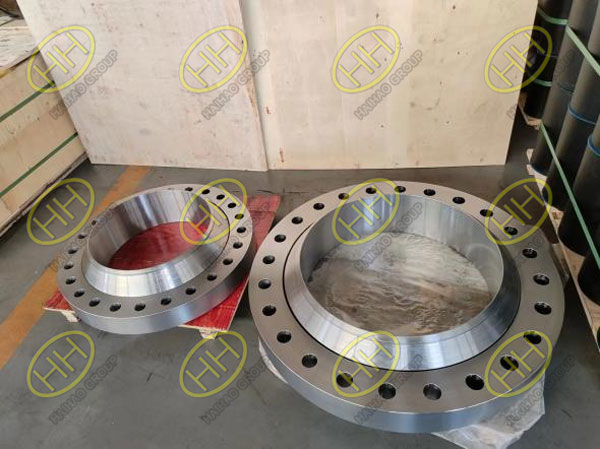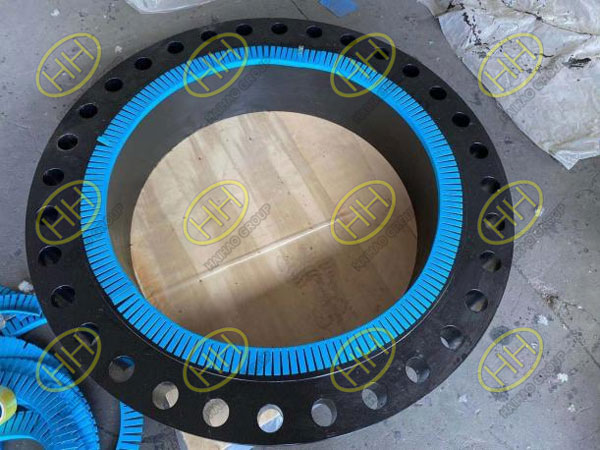Discovering the differences between ASME B16.47 Series A and Series B flanges
Are you curious about the distinctions between Series A and Series B within the ASME B16 47 standard for flanges? Let’s delve into the details of the difference between ASME B16.47 Series A and Series B flange.
In essence, when it comes to the same dimensions and pressure ratings, Series A flanges are thicker, heavier, and stronger compared to Series B flanges. Consequently, from a commercial standpoint, Series A flanges are generally pricier than their Series B counterparts.

ASME B16.47 A105 Class 900 Series A welding neck flanges
When examining flanges of identical pressure ratings and nominal diameters, the disparities become apparent. Series A exudes a robust and vigorous aura, while Series B emanates a more delicate and compact vibe.
Furthermore, Series B flanges require more but smaller fasteners (bolts and nuts) than Series A flanges, and the bolt circle diameter is smaller in Series B compared to Series A.
Both Series A and Series B define raised face (RF) weld neck flanges and blind flanges; however, only Series A encompasses ring joint (RJ) flanges ranging from Class 300 to Class 900.
The dimensions of the fittings paired with Series A and Series B are entirely distinct. For instance, the outer diameter of a DN650-Class150 fitting in Series A is 660.4mm, whereas in Series B, it is 661.9mm.

Weld Neck Flange RF ASME B16.47A A105
Of particular note is that the outer diameter of the weld ends (fitting outer diameter) in Series A is independent of the pressure rating, whereas in Series B, the outer diameter of the flange weld ends varies for different pressure ratings. For instance, for a DN800 Series B flange, the outer diameter for Class 150 is 814.3mm, for Class 300 it is 819.2mm, and for Class 600/900 it is 812.8mm.
Take, for instance, DN1500 fittings: the outer diameter for Class 150 is 1527mm, for Class 300 the fitting outer diameter is 1557.3mm, resulting in a difference of 30mm. This detail is crucial as many have encountered issues due to inaccuracies in the outer diameter of DN fittings, leading to the scrapping of matching fittings.
In conclusion, understanding the disparities between ASME B16.47 Series A and Series B flanges is imperative for accurate selection and application in various industrial contexts.
